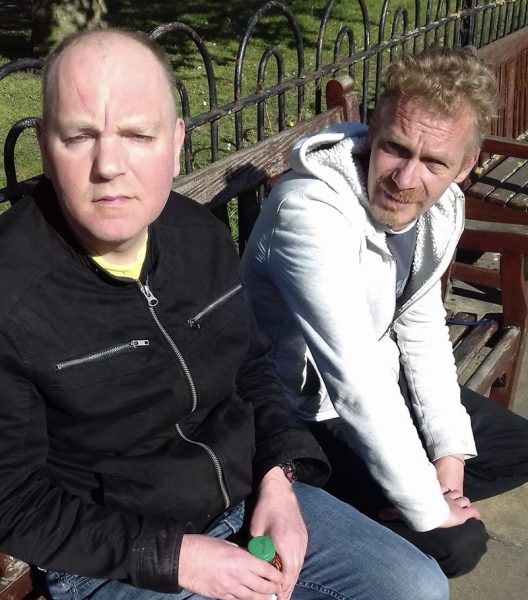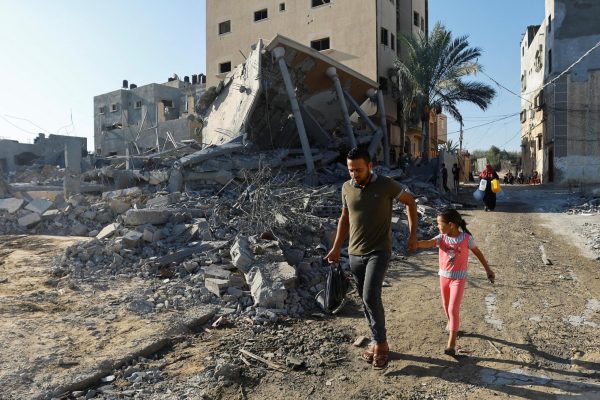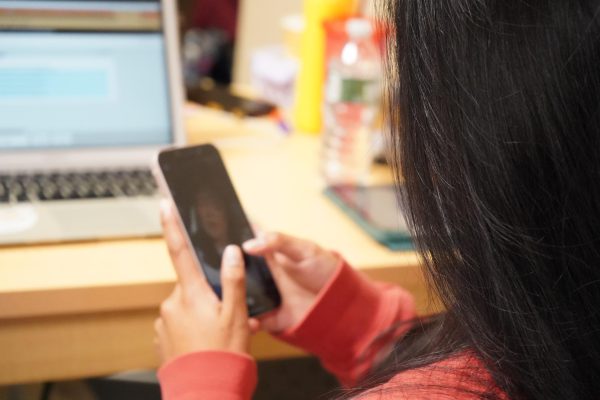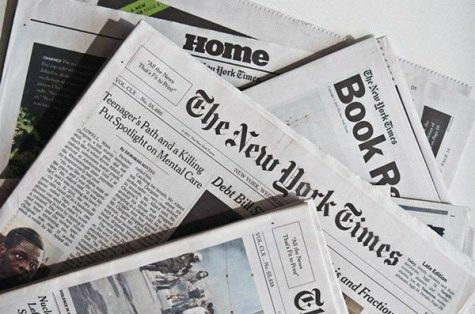The Days, Years, and Life After Surviving a Mass Shooting
“When you [are] most unable to find help, you’re expected to navigate and find help.”
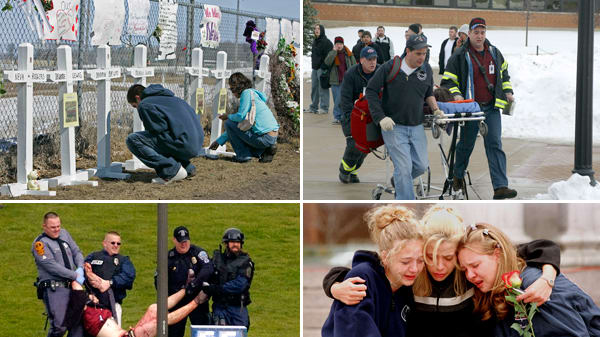
Meagan Bonner held back tears as she spoke before more than 150,000 people gathered along the west side of Central Park on a day she thought would have spent at home in bed playing a videogame on spring break.
“I’m really happy to see everyone come make a change and I’m guess I’m starting to feel safer in school,” Megan Bonner, a student at Marjory Stoneman Douglas High School had said shortly before she stepped onto the stage to give her speech at the March for Our Lives in New York City.
Roughly a dozen cameras recorded her every word for an even greater number to watch. Her recount of the shooting that left 14 of her fellow classmates and 3 staff members dead 39 days earlier at her school in Parkland, Florida interlaced with pauses in attempts to hold back teaers.
36 days after she had broken down crying passing by her high school. She remembered the trauma of listening to the sounds of chaos that led to 17 deaths by a person she knew was dangerous.
https://twitter.com/meganbonnerr/status/965061253977821184
“I was 15 years old when I knew Nick Cruz wasn’t okay,” she said of the shooter. “He was stalking and threatening physical harm to my friends and nothing was ever done or reported,” her voice broke on the final word.
Her voice shook as she remembered her friend, Aliana Petty. “Junior Petty” and “Little Petty,” to Bonner who talked about how Little Petty always had a smile on her face. “I remember seeing on Snapchat she was missing and I kept thinking that she would be okay,” Bonner sniffled again as she spoke, before saying she had learned the following morning Petty had been one of the students killed. She was 14 years old.
“It’s sad and painful, and it hurts, but I just have to move forward and be happy for them. Keep going on with my life and live for them.”
Meagan Bonner was not the sole survivor speaking out that day. She was one of dozens of survivors multiple March for Our Lives in Washington D.C., New York City, and across the country at the speaker’s podium, in the mix of the crowds, and in the vicinity as observers.
Seven of the ten most deadly mass shootings have occurred in the last ten years according to CNN. Virginia Tech, Marjory Stoneman Douglas, and Sandy Hook are all within the top ten. With each mass shooting, survivors like Bonner join what the Washington Post mentioned in its reporting as the “club no one wants to join.”
Survivors like Mary Ann Jacob each new person to the club is hard blow to take, “I feel so discouraged and sickened for the people who have to live through it knowing what it’s like.”
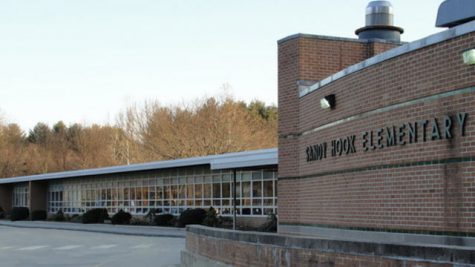
Mary Ann Jacob has known what surviving a mass shooting is like since December 14, 2012 when she was a librarian clerk for Sandy Hook Elementary School in Newtown, Connecticut.
On the Friday morning, the librarian had begun teaching a lesson to a fourth grade class. The pledge and morning announcements were over, but Jacob heard a strange loud sound come out of the intercom. Jacob thought it may have been the Principal’s “Dance Party Fridays” in the administration office and someone may have let hit the button meant to broadcast to the school. Jacob called the office and joked asking what was going on.
“There’s a shooter in the building,” the school secretary answered back under the desk.
Jacob yelled to the librarian lockdown and rushed to the classrooms nearby to yell the same to them. Jacob, the librarian, and children moved to their designated spot to hide for a lockdown. Soon after through an unlocked door they came to see a long gun.
The two seconds of terror and uncertainty abated when a police officer was seen following the gun with his finger to his mouth saying to stay quiet. Jacob and the rest moved into a closet with a file cabinet up against the door for an hour. “We were all squished in this very tight space with 18 nine-year-old kids,” Jacob described of no one knowing what was going on.
Jacob and the librarian tried to manage the situation passing out crayons for kids to draw with and comfort kids that were afraid. They were able to use someone’s phone to call 9/11. The dispatcher directing the police to where they were. However, the police officer had to slide his badge under the door before he was let in.
When the door opened to a room full of officers in riot gear that is when Jacob knew, “something awful must have happened.”
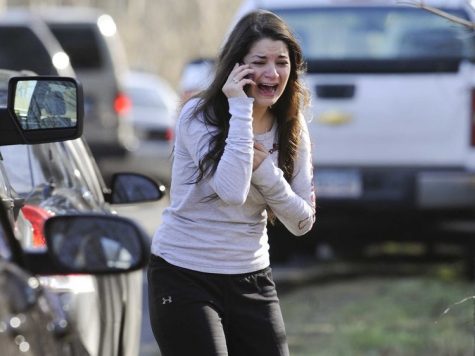
The fourth grade class that was with Jacob and the librarian were the last to leave the building. The scene they arrived to was the scene seen on TV’s across the country, including, Jacob’s husband who learned of the shooting on his phone at a niece’s college graduation ceremony, of helicopters flying above and panicked parents on the ground.
When Jacob arrived at her home, before she entered she remembered thinking as she held the door knob, “You’re walking in talking to your kids. You need to get your act together.” She said it was that early on she started thinking about how she was going to care for other people.
The school system’s administration told a meeting of the entire school system that they intended for them to go back to school on Wednesday. “It was inconceivable to me that we were ready to go back to school,” Jacob remembers the reaction of those gathered. The decision was changed to returning after Christmas break. For the teachers and staff it was difficult decision to go back having still to manage their own grief, but felt they could not leave substitutes to be the ones to manage the grief and trauma the over 300 surviving students were going through. “Everyone sort of put aside their own grief and trauma, and put a smile on and were ready to greet the kids,” Jacob looked back on.
While, Jacob returned to school with her fellow teachers, staff, and students on January 3rd. Heather Martin though never did return to her school, not as a student at least.
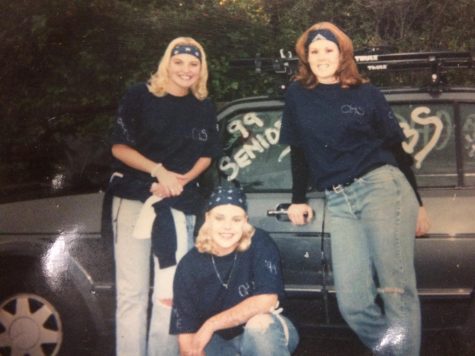
Heather Martin was a senior at Columbine High School the day of the shooting that killed 12 of her classmates and William Sanders, a teacher.
A student came running up from the downstairs commons yelling there was a shooting. Martin and her fellow classmates in the choir room jumped up ready to run out of the classroom, before the choir teacher yelled at them to sit down. Seconds after, gunfire erupted outside the door.
Martin and her classmates again jumped and moved to the choir office barricading themselves. Martin and 58 other students staying there for three hours until the SWAT team knocked on the door. The students opened the door to them, “which isn’t protocol now,” Martin described of their decision to open the door.
After, she and the other students gave their statements to the police officers, they were bused to a nearby elementary school. The students walked across a stage as their name was read so their parents to reunite with them. Martin’s experience of the events at the elementary school are foggy, but what she remembers is the media awaiting outside that “were on [them] like vultures.”
Martin vaguely remembers making a statement to the media about “bombs being all over the building or something.” She later heard her statement in voice clip with Sean Comb’s (then Puff Daddy) “I’ll Be Missing You” playing over it.
Martin recalled the initial reporting that everyone in the school was dead and that it had led to Martin’s house filled with people. A sight she came home to after first walking a couple miles with her dad and neighbor boy to her father’s car because the roads in the vicinity of the school were closed.
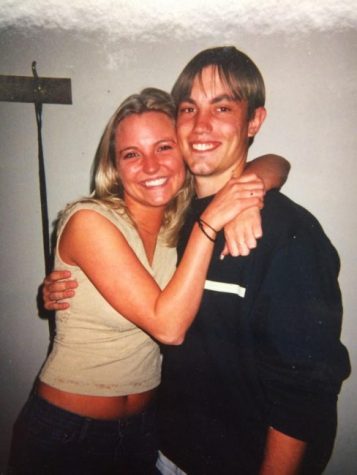
Martin felt isolated and angry watching the news coverage of the shooting and learned along with everyone else who had died. Angry at the media and anyone talking about the shooting. “Anger is part of the grieving process so I had to get made at somebody or something,” Martin looks back on it. She attributes it how reporters were everywhere and found it “insensitive” they did not respect the community’s wishes to not show up at the memorial held a couple days later, but stood on the streets outside the venue.
Jacob experienced a similar frustration with the news coverage in the aftermath of Sandy Hook. “There was like 8 million reporters” at the coroner’s press conference in a small park to Jacob and her husband’s shock. At the press conference, Jacob corrected a reporter who believed the shooter’s mother worked at the school. The result was a swarm of cameras and reporters asking her questions when they realized she worked at the school.
“You couldn’t do anything cause there was press everywhere,” Jacob recalled. She astonished at reporters following people and knocking on the windows of people’s houses in covering the shooting.
“If you wore anything Columbine you were swamped,” Martin remembered similar events of reporters asking for interviews at the memorials held.
While, Martin grappled with the anger and isolation she felt, she began to have anxiety attacks. She realized what she was experiencing as she learned what her triggers were. During college, when a fire drill occurred she “lost it.” She came to remember the fire alarm had been going off during the shooting.
“Everybody was probably looking at me like I was some weirdo,” Martin’s guessed of what people’s response to seeing her reaction to the fire drill. People’s lack awareness to the trauma she was trying to manage led her to staunchly advocate for herself for the rest of her time in college.
While, Martin did receiving counseling for a short period of time she has had to chart her own path to learn her triggers, advocate for herself, and figure out what was best for her life.
Her self-advocacy did not always yield empathetic responses. She tried explaining to a professor she could not write a paper on gun control. She received the ultimatum, “[I] had to or I would fail the class so I failed the class.” Another professor was upset her personal narrative surviving the shooting was longer than a couple pages.
During the same time, she struggled with an eating disorder and began to take recreational drugs. The combination of all the different factors led her to drop out of college and went to go work for a restaurant that wanted her to go work in Minnesota.
“It is still hard for me today is to go unfamiliar places,” Martin described of one of the lasting effects of living through the shooting at Columbine. The lack of a support system and not knowing how to get around the area in Minnesota she was working in made the situation impossible for Martin to continue in. After a couple months, she came back to Colorado for a manager’s conference “and I was like I’m never leaving.”
Jacob, like Martin, had to create her path to overcome the trauma she was left with after the shooting at Sandy Hook Elementary School. A responsibility left to her, she notes many survivor’s face the same situation, by a school system administration that told to “just go back to work.”
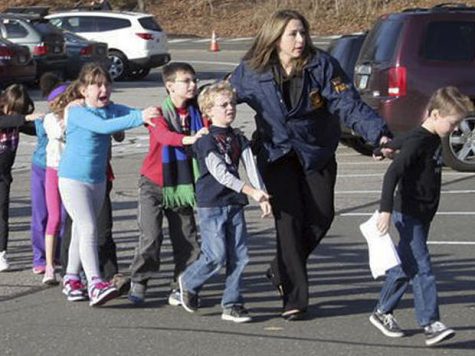
Jacob said, “it was important we made sure we got [the recovery response] right for the kids, but not at the exclusion of the adults,” by the school system. She went on to say how the adult staff were told for the most part to either function or not be there. An impossible choice for them to make Jacob said.
Jacob voiced no blame on anyone, but laments there is no “blue print” for how to recover and move on from a tragedy like what had occurred at Sandy Hook Elementary School and other mass shootings.
“It was difficult. It was months before we got that right as a community and started offering help where it was needed for the adults.” After several months had passed Jacob was told by her primary physician who knew what she had been through to go seek assistance for the trauma she was working to manage. However, Jacob found this not to be helpful, because she was left to find help without any professional guidance. She gave the analogy of if a patient had an injury the physician would have suggestions for who the patient could see, but for circumstances like hers the physician did not have any resources to provide her with.
She said assistance, some legitimate and others scams, did come to the community offering help, “It was like trying to buy a couch,” Jacob described it because there were too many options and no guidance.
“When you [are] most unable to find help, you’re expected to navigate and find help.”
Jacob considers herself lucky she was able to find help at Yale New Haven Hospital around a year after the shooting. She went for and continues to go for regular psychotherapy.
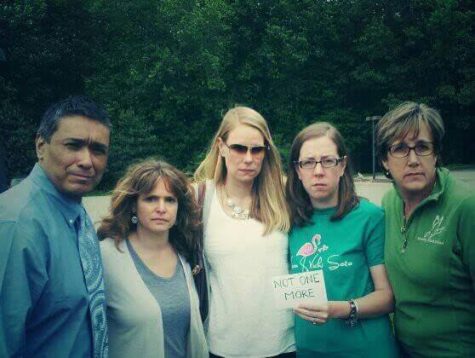
Yet, she said the most helpful and impactful assistance came from the teachers who survived Columbine, one of the first groups to reach out after the shooting at Sandy Hook. The teachers had initially reached out through the school system, but “were blocked and only through a friend of a friend were” they able to contact a staff member and meet them outside of school.
The teachers from Columbine flew out and on a harsh snowy weekend in January met with Jacob and others. As Mary listened to them discuss their stories it was there she realized they were not in a cave, but “I could see that [they] weren’t in a cave, but a tunnel.” There was a path forward.
It is experiences like Jacob’s that Martin’s hopes many other survivors will have with assistance of The Rebels Project, an organization she co-founded, to connect them with other survivors.
Martin was on her way to her job at a golf club when she heard on the radio the Aurora Theater shooting had occurred. As soon as coverage of the shooting that killed 12 people started to air she put in a CD so she would not listen to the coverage and avoided it during work. One of Martin’s triggers that continues to this day is news coverage of mass shootings. Her last major anxiety attack resulted from watching coverage of the 2007 Virginia Tech shooting. Since, she has worked to avoid coverage of shootings.
While, she avoided the news coverage the shooting at the theatre in Aurora, Colorado, it was the tipping point for her. She gathered with other survivors of Columbine to form The Rebels Community to initially support the Aurora theater survivors, but five months later was the shooting at Sandy Hook Elementary, then another shooting and another.
“It kinda kept growing and there were more and more people,” Martin said of survivors they would reach out to give them what they never had after Columbine. “We wanted to be the support system that we didn’t have access to in 1999.”
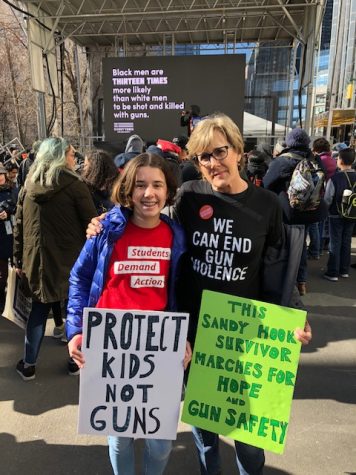
Jacob also has taken a more active role in the years after Sandy Hook. When the 2014 Isla Vista shooting that killed six people occurred Mary talked to a colleague who felt similarly horrified. They and 40 other survivors, almost half of the survivors of Sandy Hook, met at a restaurant that night. “A seminal moment” for Jacob said they realized part of their healing was taking control by speaking out.
What she admires about the survivors of the Parkland shooting was how fast they spoke out and used social media to raise their voices. She credits them with having “given permission” for survivors to speak up.
When she attend the March for Our Lives in New York City, she found the students speaking there and across the country as very inspiring and would drive grassroots change. “We’re looking to change a culture” Jacob said in regards to gun violence and debate over guns in the U.S.
Today, Jacob is active in advocating for gun control by working with Everytown for Gun Safety by speaking to different groups, like hospitals and physicians, on how they can support survivors and telling her story for Everytown’s social media presence.
https://www.facebook.com/Vox/videos/550418505145756/
She no longer works as a librarian clerk, but she still thinks about it every day. To drive from her office to home she has to, “pass by the homes of four, five people whose children died.” Some days are harder and others are easier, but she has no interest at all in moving. “No, and it is our home. We’ve lived there 20 years, my kids grew up there. It’s our home.”
Martin, now, a high school English teacher at Aurora High School continues to be involved in The Rebels Project to continue the organization’s efforts to help survivors connect with people who can answer questions no one else can. How to explain to their boss why they need to be warned about fire drills or why a day is particularly hard for them.
Her decision to become an English she said initially received confusion considering the tragedy she lived through, but says she was always mean to be an English teacher. She just “lost [her] way for a while,” until looking in a high year book an English teacher’s message encouraging her to become one herself because she believed her students would love Martin.
Her students know her story and she’s only had one minor anxiety attack at school, but school assemblies used to be hard because of the screaming. Assemblies one area in her life she has learned to manage or deal with the changes in herself after Columbine. “It will never go away. It will be a part of you for the rest of your life,” she explained.
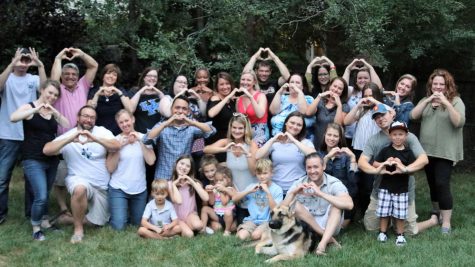
Fireworks were an issue for a few years after and while not a drinker before, she does not drink out in public because the lowering of inhibitions can lessen her control if she encounters one of her triggers.
It is tough, but do not mistake it for her not having a life outside her home. She does have a life like other survivors and everyone else. “There’s hope, there’s life after this.”
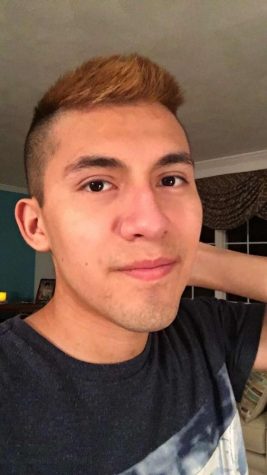
Matt Reich is a guy constantly on the go who can't let a minute go unused. Born in a city in Texas, raised in rural Connecticut, and now he's trying to...



